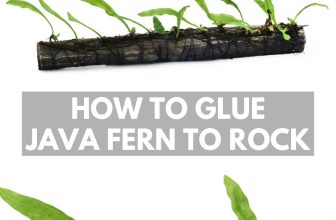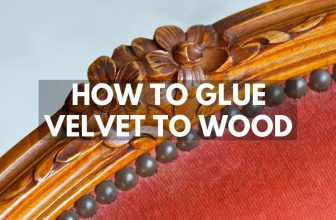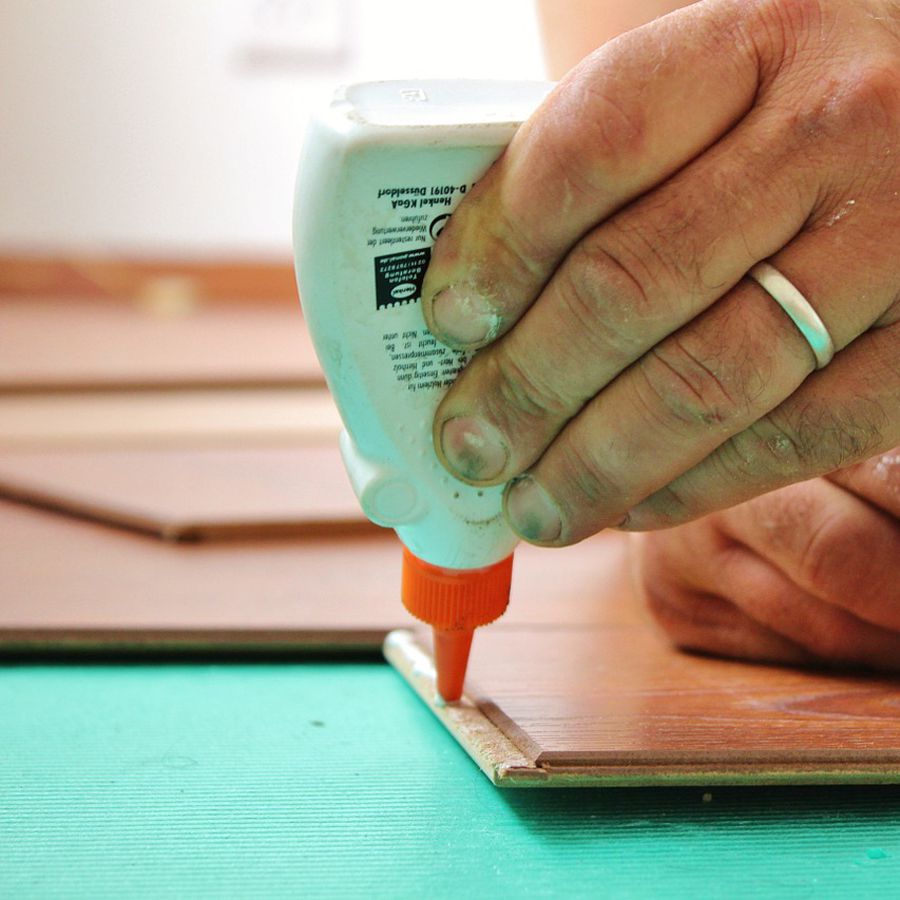
What is the Best Glue for Wood
The most common adhesives for joining wood are PVA, epoxy resin, polyurethane, and cyanoacrylate. They all have slightly different compositions and are used for different types of joining. In this guide to the best wood glue, we explain the strongest adhesives you can use, how they work, and what other materials they will bond to.
Whether you need to fix wood to wood or wood to metal, glue is your best option without using any power tools or hardware. The best general glue for timber joining is a wood-specific PVA adhesive but if it is strength you need there is a better option.
What is the Strongest Wood Glue?
The strongest type of glue to use on wood is epoxy resin. Epoxy glue is a two-part mix that combines resin with a hardener. Once the parts are mixed, this initiates a chemical reaction that causes the glue to form an unbreakable bond. You can view our guide to epoxy here.
What is the Fastest Setting Wood Glue?
The wood glue that sets quickest is cyanoacrylate (CA, super glue) which fixes in position in under 30 seconds. Curing time can still take up to 24 hours but you can set things in place very quickly with a good super glue. PVA is fairly fast drying and some 5-minute epoxies set very strong but again need time to fully cure.
Top 5 Wood Adhesives
J-B Weld WoodWeld Epoxy Syringe
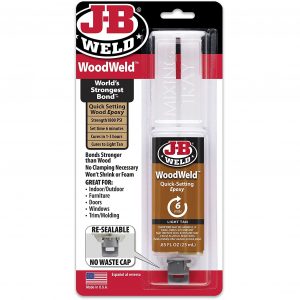

J-B Weld WoodWeld Epoxy Syringe is a quick and easy resin glue that is ideal for small jobs with an instant application. WoodWeld dries a light tan color that blends with most common timbers to make glue joints more discreet on things like furniture, frames, model making, or structural woodwork.
With a tensile strength of 3770 PSI, this is one of the strongest glues you can use for bonding wood. Once the epoxy has fully cured you will not be able to break the bond without extreme force. You can use this both indoors and outdoors because it is totally waterproof and weather resistant.
Gorilla Wood Glue
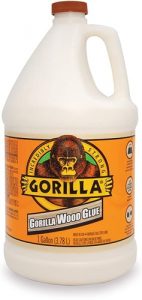

Gorilla Wood Glue is available in a large 1-gallon container which makes it the best value wood glue for large projects and carpenters who use adhesive frequently. It is a Polyvinyl acetate (PVA) based glue but is certified to use both indoors and outdoors with ANSI/HPVA Type II water resistance.
Gorilla Wood Glue is perfect for home DIY tasks like fitting skirting boards or providing extra strength to shelving units. You can get this in smaller amounts if you only need a little but it does have a great shelf life once opened which is a big plus.
Devcon 8.5oz 5 Minute Epoxy 1500lb Waterproof Glue
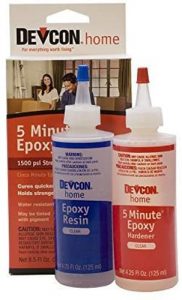

Devcon 8.5oz 5 Minute Epoxy 1500lb Waterproof Glue is a solid choice for any kind of wooden joint that requires a fast set time. The beauty of this adhesive is that it will also bond well with other materials like metal, glass, tile, ceramic which means you can use it for just about anything.
Many tradespeople in the older generation swears by Devcon Epoxy and say that JB Weld doesn’t even begin to compare. You simply mix the two parts together in small batches and apply it straight to the surface and within 5 minutes your bond is set in place and beginning to cure.
Gorilla XL Super Glue Gel
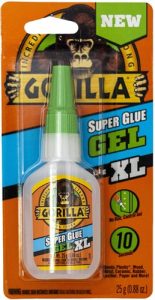

Gorilla XL Super Glue Gel is one of our favorite quick-setting cyanoacrylates for wood because it is less runny than others and is incredibly strong. The gel formula has a higher viscosity which means it doesn’t soak away through absorption into the wood and creates an incredibly strong surface bond.
We would recommend using this glue on small wooden fixings and repairs where you only need a small amount to get the job done. That being said, a single bottle of the XL goes a long way and can be used on most other materials as well as wood.
MAX Bond THIXOTROPIC Industrial Grade Non-Flowing Epoxy


For large-scale adhesive joints, MAX Bond THIXOTROPIC Industrial Grade Non-Flowing Epoxy is one of the strongest wood adhesives available today. It conforms to almost every Aerospace, Military, and Naval material specification there is and is the best non-sagging wood glue around.
For structural joints and points of high pressure/impact, this is one of the few adhesives we trust to use without hesitation. Because it is so thick and has a 90 minute working time, you are able to work with it much easier than with a runny glue and get far superior results.
Different Types of Wood Glue
PVA Wood glue is a tried and tested choice that is specifically designed for the job of sticking wood together. Polyurethane sticks to glue amazingly well because it expands as it dries which provides extra grip and holding power. Epoxy resin will also work, as will super glue for smaller projects. Keep reading for more details on the types of glue that stick to wood.
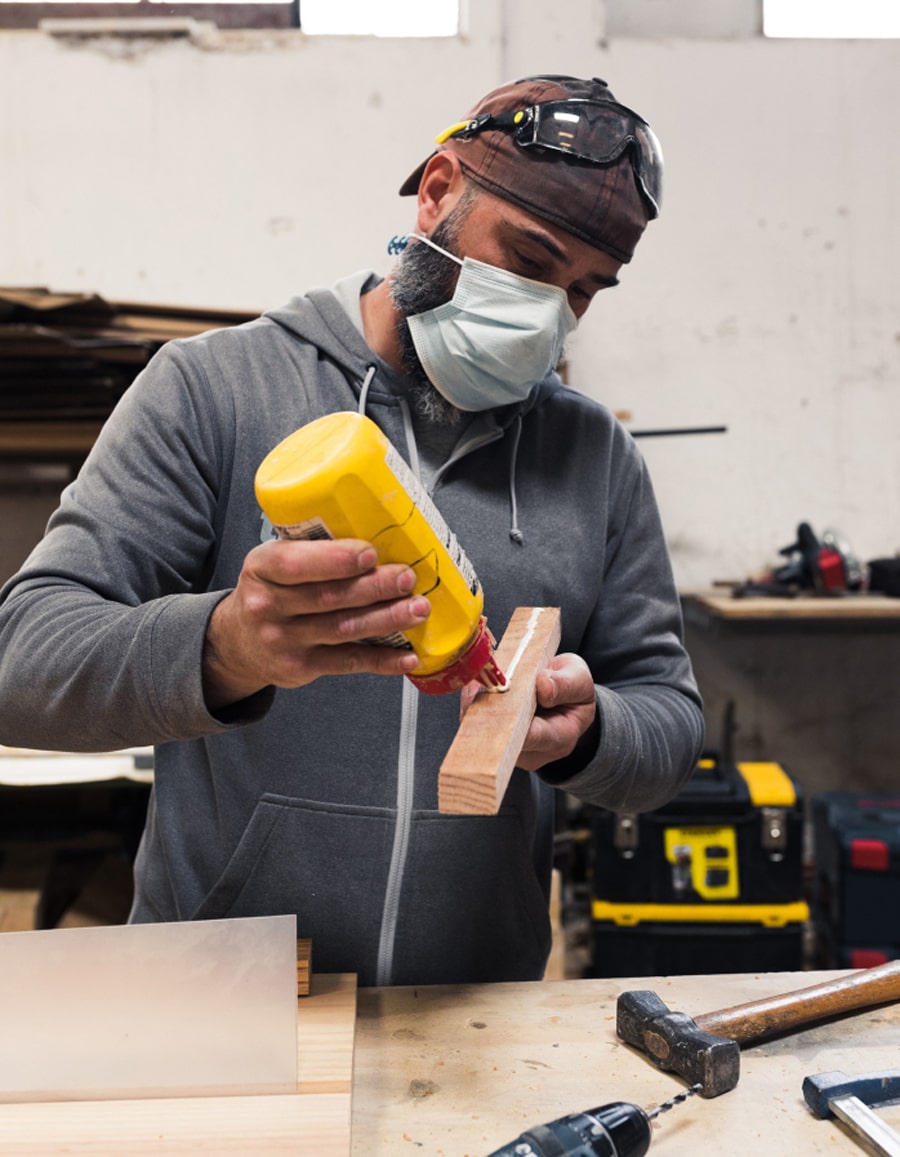
PVA Wood Glue
PVA glue or Polyvinyl Acetate is a synthetic polymer that is ideal for sticking wood, paper, and other porous materials together. There are two types of PVA glue you can use on wood and while very similar, they have some key differences to consider when choosing one.
White glue is a multipurpose PVA that has a rubbery and soft texture when dry. This makes it hard to sand which can be an issue for some carpenters. It creates a strong bond with a little bit of flexibility after curing.
Yellow glue is tailored more towards carpenters and joiners but is very similar in composition. The main difference between white and yellow wood glue, apart from the color, is that yellow glue dries brittle which makes it far easier to sand down.
Going by names like wood glue, carpenters glue, white glue, school glue, and Elmer’s glue, you may already be familiar with this type of adhesive. In fact, you have probably used it at some point in your life – most likely as a child.
When it comes to choosing between white and yellow glue, it doesn’t make much difference unless you plan to sand it down after.

Polyurethane
Polyurethane adhesive, otherwise known as PU glue, is one of the best glues for wood because of its tremendous gripping power. It works by expanding into the grain of the wood which provides a very solid hold. You must first wet the surface to create the catalyst for the glue to expand and cure.
Polyurethane glues bond very well to other materials like stone, plastic, glass, metal, foam, and ceramic so it will work well on multi-surface joinery. I would use a PU adhesive for fixing wood to plastic or vice versa as well as other odd jobs and fixings.
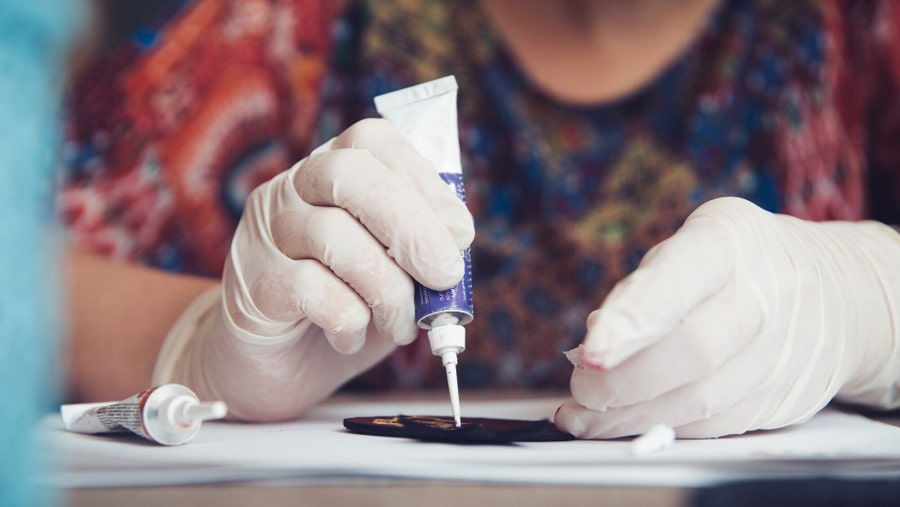
Cyanoacrylate
Cyanoacrylate, commonly called super glue, is a super strong and fast-drying wood glue that is very useful for small tasks. It should be used sparingly as the glue is very runny but dries quickly on wood. This means you have a very small window of time to get things into position before it starts to set.

Epoxy Resin
Epoxy Resin is a favorite of ours at Glue Lab for most small DIY jobs that require a strong hold and tight joint. It bonds to wood very well but you should prepare and clean the surface before you apply it. It also works well with wood to metal, plastic, and glass, making bonding different materials together nice and easy. The cure time can be up to 72 hours which is the only downside.
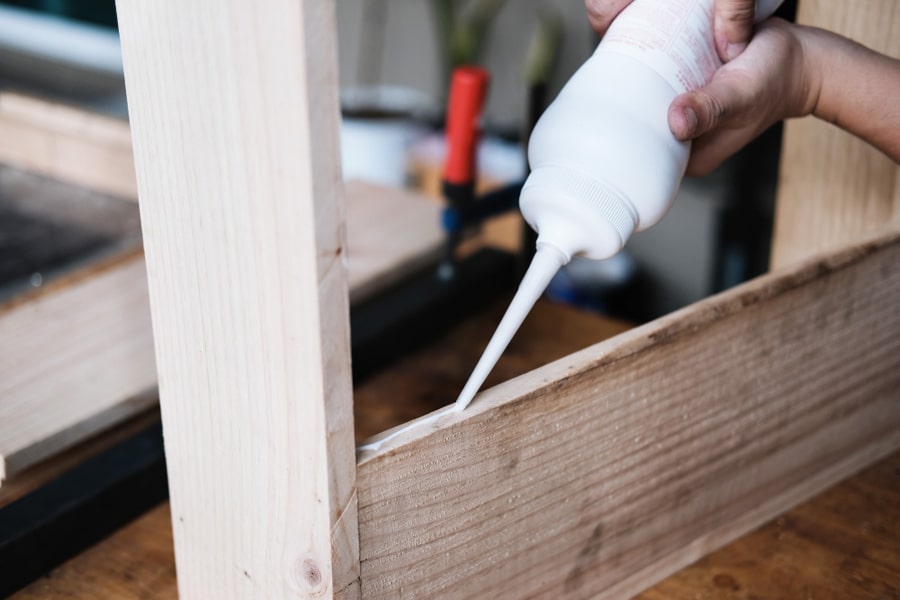
Guide for Gluing Wood
You can use the best wood glue on the planet and still get things wrong if you don’t follow these simple guidelines.
Preparation
To prepare the wood before gluing you simply need to level, roughen, and clean the surface. The trick to getting the strongest adhesive bond for timber is to expose a fresh layer of wood right before applying the glue.
Removing a thin layer on top of the wood opens pores that allow the glue to be absorbed beyond the surface. This strengthens the bond and gives a tighter grip on the wood.
The idea behind preparing wood to be glued is to get the closest contact between the two pieces of wood being joined. You can do this by leveling the surface with a bladed tool, file, or sander, and then finish with sandpaper.
Smooth wood is always preferred because it can get the closest connection and has less chance for air bubbles to form. Speaking of air bubbles, the surface should be level and clean before gluing. Use a damp cloth or sponge to clean the area and let it dry.
Application
When applying glue to wood, you should be generous and make sure there is enough to cover the entire area. Depending on the type of joint and materials being bonded to the wood, one continuous application is better than individual blobs. You can use zig-zag motions to cover large areas evenly or create your own pattern for awkward shapes.
When you join the wood and apply pressure you should expect excess glue to squeeze out of all gaps. You should be able to see glue to the edge of all exposed surfaces. This indicates that you applied a sufficient amount of glue and will ensure total coverage from the center to the edges.
Be sure to clean any excess glue as soon as it squeezes out from the sides. You can use a scraper to remove the bulk of it and then finish the job with a cloth or chemicals if needed. If you skip this step your joint will look messy and may stain the wood a yellow color over time.
Setting
After gluing, you will get the best results with a tension adjustable clamp of some kind to keep the wood set in place. Clamps allow you to apply the right amount of pressure and keep everything in place until the glue sets.
If you don’t have any clamps, you can use weighted objects like a bookend to apply pressure. Alternatively, heavy objects placed on top of the joint will utilize gravity’s force to create a tight seal. The main issue with using alternative methods of clamping is that they are not as solid and can be knocked or slip out of place.
Safety
When preparing wood to be glued it can be tempting to check the smoothness of a surface with your fingers. This can lead to splinters sticking in your hand, and the big ones really hurt. Make sure your workspace is clear of obstructions and you have sufficient light to see.
To stay safe when working with wood glue, you should always follow the safety guidelines on the packaging. This typically includes working in a well-ventilated area, using protective eyewear, using nitrile gloves, and wearing protective clothing.

Wood Glue FAQs
Is polyester resin good for wood?
Polyester Resin is not the best glue for fixing wood in comparison to the other options but it does work very well for gluing wood to fiberglass. It is about 80% as strong as epoxy and not quite as waterproof. For these reasons alone I would avoid using polyester resin for anything other than some fiberglass jobs. Even then, epoxy will be superior most of the time.
What type of glue works best on hardwood?
Epoxy resin is one of the best glues for hardwood furniture although PVA wood glue also works well on larger surfaces.
What is the best type of glue for Oak wood?
The best wood glue for Oak furniture is JB-Weld WoodWeld Epoxy Resin because it has a brown/tan finish that is very similar to the color of oak wood.
What is the best type of glue for Cedar wood?
Because Cedar can absorb quite a lot of glue we recommend both PVA and epoxy resin, depending on the size of the job.
We hope you found the best wood glue for your project, if you need any further information please get in touch.




